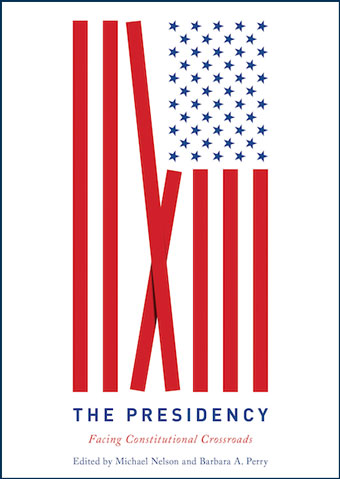American regicide
Postwar presidents and the bitter politics of returning to normalcy
Excerpted from The Presidency: Facing a Constitutional Crossroads, edited by Barbara Perry and Michael Nelson, University of Virginia Press, 2021.
In December of 1783 George Washington was eager to get home. After seven years of war, the weary general began a long trek to Virginia from New York, where he had traveled to observe the departure of defeated British troops from American soil. A combination of bad roads and jubilant Americans conspired, however, to impede Washington’s return to his hearth. On December 20, just after arriving in the nation’s capital at Annapolis, Washington sent a note to the president of the Confederation Congress saying that he was there to resign his commission as commander-in- chief and wondering whether he should do so “in writing or at an audience.” It is easy to imagine that an exhausted soldier would hope to hear the former. But Congress replied instead that Mount Vernon should wait. Washington would be “admitted to a public audience”—three days later.
 The resulting appearance before Congress became an iconic moment in American history. John Trumbull’s massive oil painting of Washington resigning his commission hangs in the rotunda of the U.S. Capitol building, where it looks down on millions of squirming schoolchildren every year. And the emergence of a national mythology equating Washington with the Roman statesman Cincinnatus, who also abandoned his sword for a plow, draws mainly from this episode. King George III is said to have remarked to his American portraitist that Washington’s voluntary relinquishing of his immense powers as commander-in- chief made him “the greatest man in the world.” Although that story is probably apocryphal, the sentiment embedded in it has endured. Washington rose to the greatest of heights—“First in the hearts of his countrymen”—largely because he refused vast power when it was his for the asking.
The resulting appearance before Congress became an iconic moment in American history. John Trumbull’s massive oil painting of Washington resigning his commission hangs in the rotunda of the U.S. Capitol building, where it looks down on millions of squirming schoolchildren every year. And the emergence of a national mythology equating Washington with the Roman statesman Cincinnatus, who also abandoned his sword for a plow, draws mainly from this episode. King George III is said to have remarked to his American portraitist that Washington’s voluntary relinquishing of his immense powers as commander-in- chief made him “the greatest man in the world.” Although that story is probably apocryphal, the sentiment embedded in it has endured. Washington rose to the greatest of heights—“First in the hearts of his countrymen”—largely because he refused vast power when it was his for the asking.
Washington, it may be recalled, for most of the Revolutionary War had effectively been the government of the United States
However, some careful students of this moment say that we’ve drawn entirely the wrong lesson from it. Sociologist Barry Schwartz, in his Neustadt Award–winning book George Washington: The Making of an American Symbol, concludes that conventional accounts of the episode give far too much credit to Washington. They assign “to Congress a role that is much too passive. In fact,” Schwartz claims, “the Annapolis ceremony was arranged neither by Washington nor exclusively for Washington; it was an occasion contrived by Congress for reasons of its own.”
What were those reasons? Washington, it may be recalled, for most of the Revolutionary War had effectively been the government of the United States, designated, in the words of one British observer, the “dictator of America.” It was within Washington’s power to raise and equip troops, to buy or to commandeer provisions, to control food supplies, to mete out justice, to exercise controls over public health, and in general to take whatever steps were required to fight off the threat.
The Continental Congress was a bit actor. However, with Washington’s mission accomplished, there was no longer any need for an all-powerful commander. Accordingly, Washington’s appearance at Annapolis allowed the Congress to reassert itself, in a highly orchestrated and symbolic fashion, as the nation’s main governing force. Toward this end, Congress, working with choreography crafted by Thomas Jefferson, fashioned a ceremony that emphasized Washington’s subservient role to the national assembly.
Here is Schwartz’s description of that encounter.
Washington waited as the spectators filed into the Hall and took their places. Not until he was invited to speak by the president did he rise. Before delivering his address, Washington lowered himself—he bowed—to Congress. The members of Congress did not rise with Washington and therefore did not reciprocate his bow; they merely acknowledged his deference by doffing their hats. Washington’s deference to Congress was copious and unstinted; Congress’s deference to Washington perfunctory and abridged. Thus defined as servant rather than master of his government, Washington read his resignation speech. Having finished, he walked forward, then up the steps of the seated president’s platform, and submitted to him a written copy of his speech along with his commission. President [Thomas] Mifflin was the passive, superordinate member of the ceremony; Washington was the active, subordinate member.
Having thus met the obligation of fealty, Washington took his leave of Congress, arriving home as a private citizen on Christmas Eve. The prewar political order had been restored.
